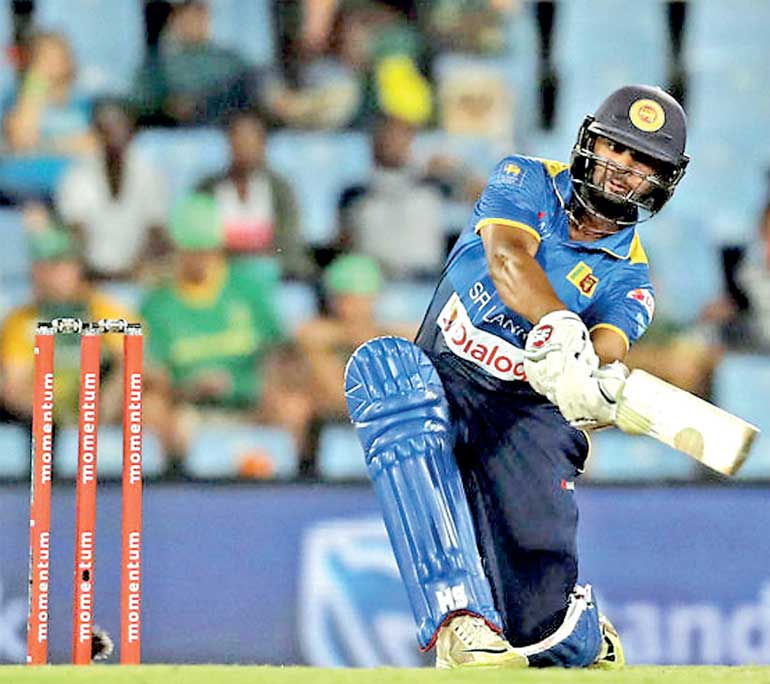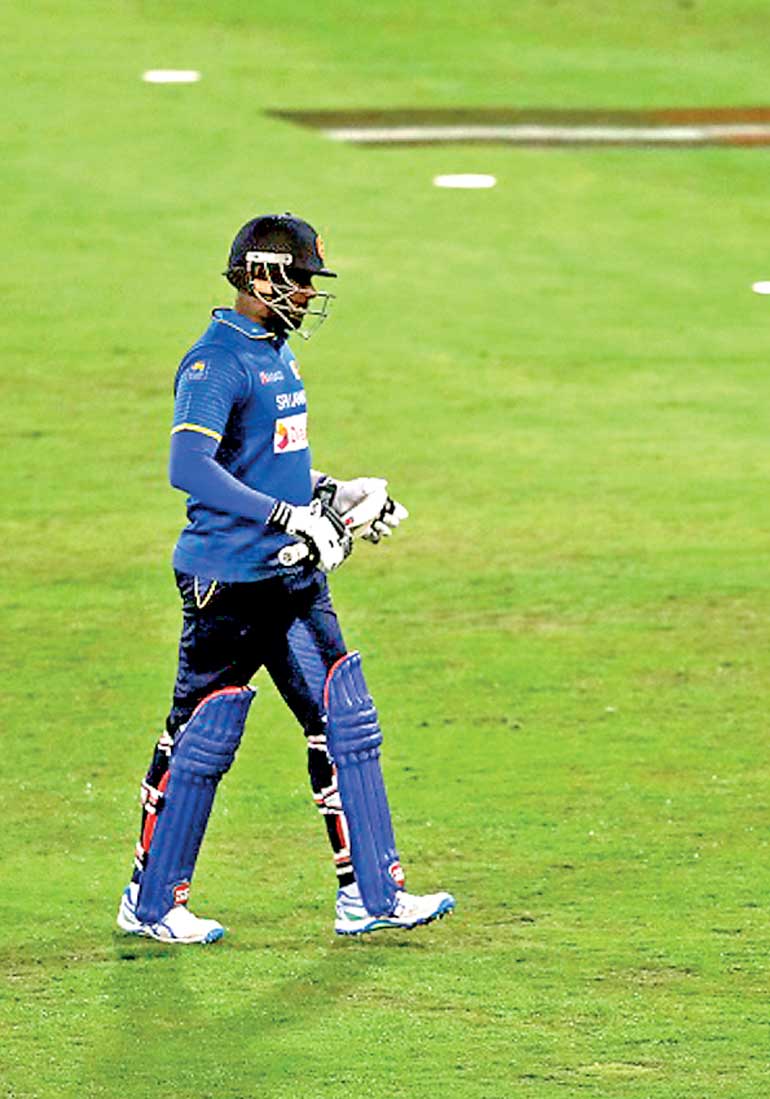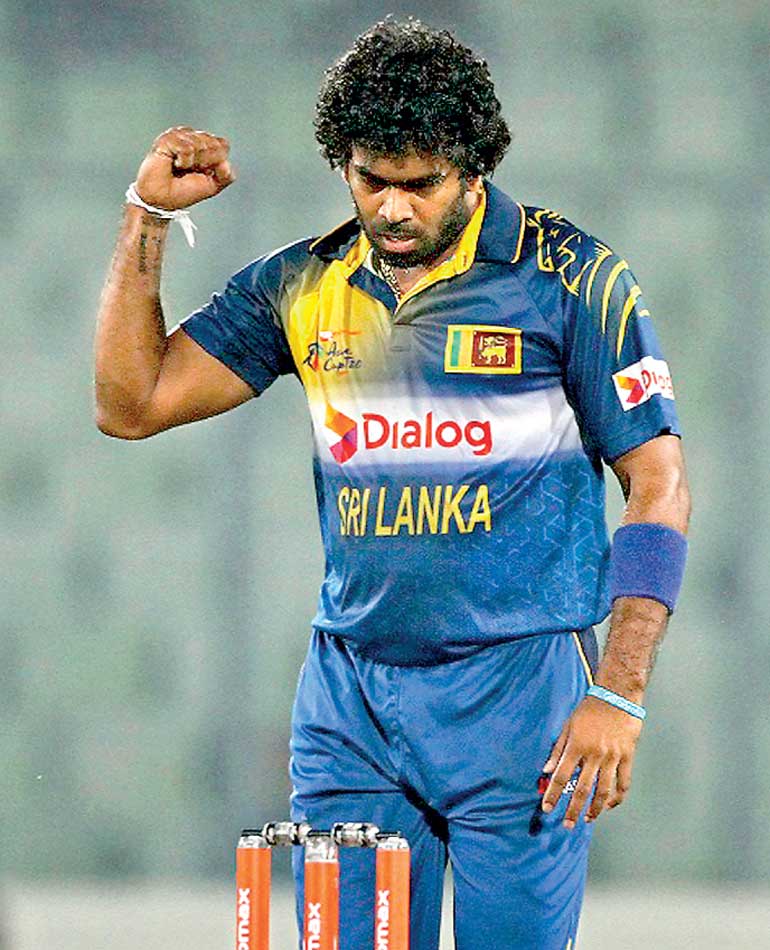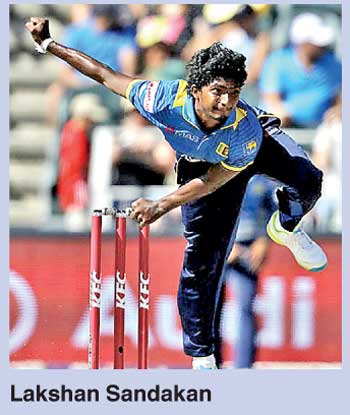Saturday Jan 11, 2025
Saturday Jan 11, 2025
Tuesday, 30 May 2017 00:03 - - {{hitsCtrl.values.hits}}
ESPNCricinfo: The high-intensity training camp has been attended, a foreign bowling coach hired, blessings have been sought, declarations of confidence made, and the press has been conferenced, but will any of that help Sri Lanka leave an impact on the Champions Trophy?
Their reality is stark. Sri Lanka’s first game of the tournament is against South Africa, who whitewashed them 5-0 earlier in the year. Their second match is against India, who have beaten them 12 times in their last 15 meetings. Even Pakistan – Sri Lanka’s third opponent – whose own ODI form has been modest, defeated Sri Lanka at home in the most-recent bilateral series between them. Never in this century, perhaps, has a Sri Lanka side approached a global tournament with expectations so low.
 Asela Gunaratne’s unorthodox style – switch-hits and all – will lend firepower to Sri Lanka down the order – Associated Press
Asela Gunaratne’s unorthodox style – switch-hits and all – will lend firepower to Sri Lanka down the order – Associated Press
Yet, along with the low expectations, comes a sense of freedom, Sri Lanka say. There is the hope someone in their top order will take the tournament by the collar – perhaps Kusal Mendis, who has already made his mark in the Test format, or Niroshan Dickwella, whose heroics so far, have been in T20s. There is the belief someone like Lakshan Sandakan, the left-arm wristspinner, can make his presence felt during the opposition’s middle overs.
Most of all, Sri Lanka are desperate for a roaring return to ODIs for their longtime match-winner, Lasith Malinga. Though he hasn’t played an ODI since 2015, largely due to injury, Malinga’s form did appear to improve through the recent IPL. Earlier in the year, Malinga’s return to T20s also showcased just how much his experience can lift the attack – not only is he an expert end-overs operator, even the other bowlers appear to lift their performance when Malinga takes the tough roles off their hands.
But even with Malinga, it is as yet unclear whether he will be fit enough to deliver 10 overs at full intensity. Where other teams have form, runs and wickets behind them, Sri Lanka have only hope.
 Angelo Mathews, returning from an injury layoff, will lead a young batting core – Associated Press
Angelo Mathews, returning from an injury layoff, will lead a young batting core – Associated Press
1998 – Semi-finalists
2000 – Knocked out at first stage
2002 – Joint-champions
2004 – Knocked out at group stage
2006 – Knocked out at group stage
2009 – Knocked out at group stage
2013 – Semi-finalists
This does not make for pretty reading. Sri Lanka drew a home series 1-1 against Bangladesh this year, but had been pulverised in South Africa, and have been regularly walloped by New Zealand over the past few years. Sri Lanka have not beaten a Champions Trophy side in a bilateral series since late 2014, when they defeated England in a seven-match series at home.
The least of Sri Lanka’s weaknesses appears to be their top order. Their likely top six will feature Upul Tharanga, who provides experience, and has prospered in this tournament before. Also on show are Dinesh Chandimal and Angelo Mathews - senior men with a history of consistent output, even if the latter is coming back to the side following a long layoff.
But perhaps the most-watched players will be Mendis and Dickwella, both of whom are blinding talents, but for whom the most significant hurdle will be the moving ball. Though Mendis had been the player of the tournament in last year’s ODI tri-series in Zimbabwe, and has more recently hit a maiden ODI ton at home, he had made a string of modest scores during Sri Lanka’s tour of South Africa, where the ball behaved roughly the same way it is expected to in England. Dickwella’s game, meanwhile, remains a little raw, and perhaps he is over-reliant on the areas behind square for his runs. If both these batsmen can find form however, Sri Lanka’s totals are likely to be healthy.
 Sri Lanka need their longtime match-winner Lasith Malinga desperately, but will his body hold up? – Associated Press
Sri Lanka need their longtime match-winner Lasith Malinga desperately, but will his body hold up? – Associated Press
There is plenty to choose from here, but it is difficult to look past Sri Lanka’s fielding, which in addition to having cost the team plenty of matches, has also been one of the world’s great recent sources of slapstick comedy. Over the past few years Sri Lankan fielders have routinely dived over the ball, kicked it to the boundary, fist-bumped it, chest-bumped it, groin-bumped it and occasionally used it as a blunt object to hurt themselves with. The quality of Sri Lanka’s fielding has also often been inversely proportional to the temperature, so if London or Cardiff sees an especially cold day, spectators could be in for a few laughs.
Over the past three years, Sri Lanka have lost twice as many matches (36) as they have won (18) against Champions Trophy oppositions
Sri Lanka have also conceded an average of 57.9 runs in the last 10 overs of an opposition innings - the worst for any side participating in this Champions Trophy
Upul Tharanga has 14 ODI centuries. The remaining batsmen in Sri Lanka’s squad have 10 combined
Lasith Malinga last played an ODI on November 7, 2015
Lakshan Sandakan Age 25, Left-arm wrist-spinner: 5 ODI wickets at 51.40
It is in the longer format that Lakshan Sandakan made his first impression in international cricket, the ball whirring out of his hand, then bursting in either direction off the pitch, while Sri Lanka whitewashed Australia in Tests at home. But as he arrives at his first global tournament as his team’s lead spinner, even he might reflect that in ODIs, he has got the job by default – Rangana Herath  having retired from the format, Sachithra Senanayake having been diminished since being reported for throwing, and Ajantha Mendis continually ailed by injury. Still, and though he lacks the control of the best limited-overs spinners, Sri Lanka hope Sandakan will become one of their primary wicket-takers during the tournament. Deployed in the middle overs, Sandakan’s big turn and well-disguised googly have the potential to disrupt an opposition charge, and to break the match open for his team. Useful too are his two straighter deliveries, which are used less often. For now, Sandakan has largely prospered when more experienced bowlers are building pressure at the other end. The Champions Trophy may be his opportunity to seize greater responsibility.
having retired from the format, Sachithra Senanayake having been diminished since being reported for throwing, and Ajantha Mendis continually ailed by injury. Still, and though he lacks the control of the best limited-overs spinners, Sri Lanka hope Sandakan will become one of their primary wicket-takers during the tournament. Deployed in the middle overs, Sandakan’s big turn and well-disguised googly have the potential to disrupt an opposition charge, and to break the match open for his team. Useful too are his two straighter deliveries, which are used less often. For now, Sandakan has largely prospered when more experienced bowlers are building pressure at the other end. The Champions Trophy may be his opportunity to seize greater responsibility.
Sandakan is the first left-arm wristspinner to play for Sri Lanka, in any format.